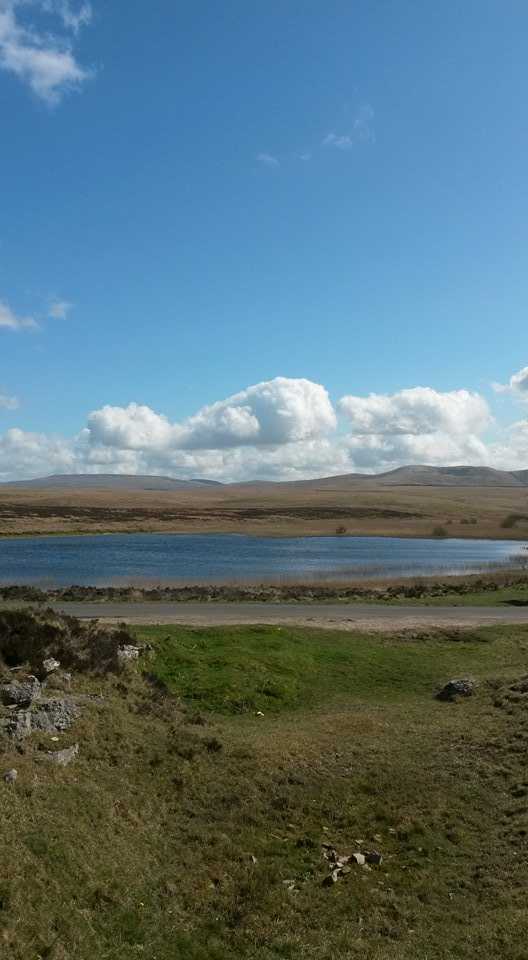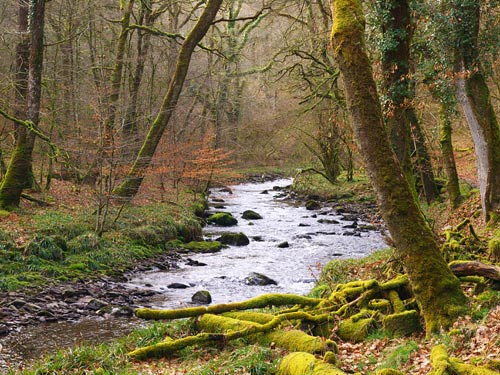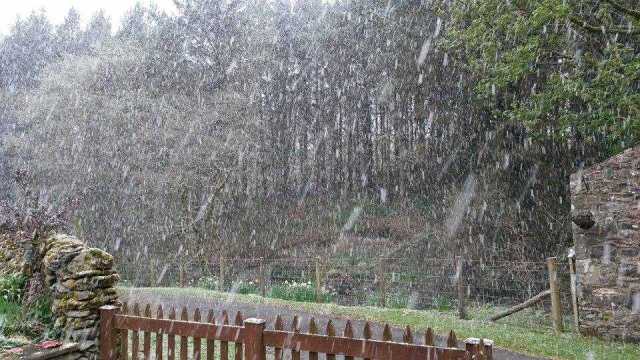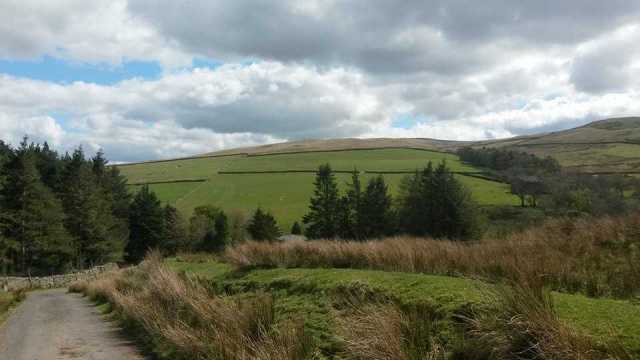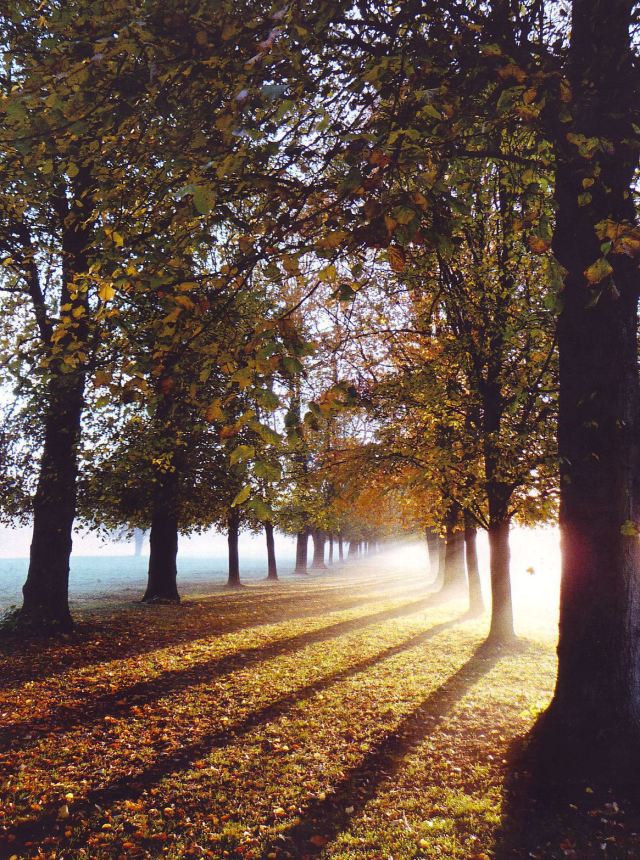Rebecca Welshman
Jefferies wrote this article for the Pall Mall Gazette in November 1879. It is based on observations made in his outdoor diary while he was living at Surbiton. The Jefferies family was renting 2 Woodside Terrace, on Ewell Road, which was in Tolworth in the Parish of Long Ditton. The front of the house faced in the direction of Tolworth Common and Richmond Park, and the back looked out in the direction of Hook, Claygate and Chessington.
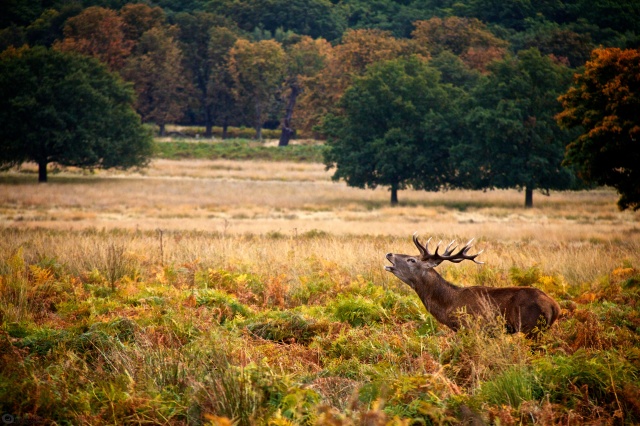
Image of Richmond Park posted by Nicola Albon (http://sliceoflondonlife.com/wildlife-deer-rut-richmond-park/)
“The poplars alone at the opening of the month were bare of leaves. These tall trees, lifting their slender tops so high above the rest, contrasted the more in their leafless state with the thick foliage of the wood beneath them. Rows of elms in the hedges were still green, and of those that did show a yellow tint many upon examination could be seen to be decaying in the trunk or branches. That part of an elm which is slowly dying usually turns yellow first. On some of the oaks the inner leaves were still greenish, while those on the outer boughs were brown, and the mingling of the two tints seen at a little distance under the sunshine produced a remarkable and pleasing colour. Other oak-trees had assumed so red a brown as to approach to copper colour. The ash standing in the same hedge was a tender green with the faintest undertone of yellow, and the lowly elder bushes were not less green than at midsummer. Between the dark Scotch firs the foliage of the beeches seemed a warm red. The branches of the larch had a fluffy appearance, caused by the yellow needles which had partly separated but had not yet fallen. Horse-chestnuts even yet retained some leaves; of those that had dropped a few were half yellow and half green, the hues divided by the midrib. Birches, too, except just at the corners of the copses or in isolated positions, were not yet bare.
Under the Spanish chestnuts heaps of leaves had collected, in walking through which the foot often exposed the dropped fruit hidden beneath them; but though so many had fallen the branches were not entirely denuded ; while whole hedgerows full of maple bushes glowed with orange. The sun shone brilliantly day after day, lighting up the varied hues of the trees and hedges and filling the woodlands with beauty. In proportion to the length of the day there was probably more visible sunshine in the early part of November than in July. A dry atmosphere made the roads white, and the least puff of wind raised the dust as in March. In the evenings, immediately after the sun sank, the western sky often exhibited a delicate greenish tint, while the detached floating clouds were rosy: these colours, however, were very fleeting—they lasted but a few minutes.
The dry air could hardly be said to blow, but drifted, as it were, from the north-east—so slowly that unless you faced it the current was not noticed; and it scarcely caused a falling leaf to slant aside in its descent. But this northern current silenced the thrushes, despite the sunshine, and made the nights sometimes bitterly cold. Here in the south, the first fieldfares were noticed on the 24th of October, when a few passed over at some height: but during the first week or ten days of November scarcely a fieldfare or redwing appeared, and those seen were journeying on. The absence of these birds was very marked. On the afternoon of the 9th inst. the sweet notes of the thrush were heard again—a sure sign of changing weather. Next morning it was milder and cloudy, with slight rain, and the thrushes sang in every hedge. The leaves that had adhered so long, now, under the rise of temperature, fell fast and continuously, dropping quietly all day long, even when sheltered from wind. Soon, however, the breezes became colder; the song of the thrushes ceased and frost followed. A water-rat was seen on the 14th diving in the brook; he probably did not anticipate so sudden a winter. Next morning the ponds were all frozen fast with ice half-an-inch thick, in which myriads of leaves that had been floating were embedded. For fifty or sixty yards one great hedgerow resounded with the ceaseless chirping of innumerable sparrows perched on every bough. Their feeding-grounds, the stubbles, were iron-bound, affording them no food. The peewits scarcely kept out of gunshot, so tamed or rendered desperate by the cold, and instead of feeding in a flock were scattered in twos and threes over twenty acres.
In the hedges the fieldfares and redwings were now plentiful: so short a time had brought them about. It is not often that birds are so quickly affected by frost as on this occasion— a single night seemed to have numbed them. The white rime remained fringing the green branches of the spruce firs all day; the fields too, were hoar; and it was perfectly still as usual in a great frost. Yet the sun shone, and where the pond had been broken for the horses to drink, splinters of ice standing on edge reflected the golden splendour. At night a yet sharper frost settled on the earth: but on the morning of the 16th though the grass was white, the thrushes sang in chorus, and immediately afterwards rain fell. The rime disappeared and the frost went as rapidly as it came. Its effects upon the foliage were then visible. Under the ashes the grass was concealed by the leaves shrivelled to a black brown, from which arose a slightly astringent odour. Where maple bushes projected over the bare earth of ploughed fields there was an orange semi-circle upon the clods caused by the tinted leaves that had dropped. Horse-chestnuts and birches were now quite bare: but not so the elms and oaks. The elms were yellow, but still thick with leaves; some of the oaks had even yet a tint of green. On the morning of the 20th it began to snow, and the rows of yellowish elms formed a strange background to the storm. The blast drove before it snow-flakes, brown leaves, and twirling ‘keys’ torn from the trees. With short intervals the snow continued all day, whitening the fields and that side of the trees towards the wind. The bramble-bushes, thick with green leaves, upheld masses of snow: so green and flourishing are the brambles that not a crimson leaf is yet to be found upon them. Snow fell again on the 21st and 22nd and the fields continued covered.
There was a severe frost on the morning of the 23rd. As the morning advanced the sun shone out in an almost cloudless sky, and the yellowish green elms and the brown oaks seemed brought into strong relief by the dazzling white of the fields. And over the broad white meadows the shadows of these trees were thrown sharp and clear—a lovely sight not often seen. Thus, with bright sunshine at one time and snow at another, with sharp frosts, leafy woods, and singing thrushes, November has presented the most marked contrasts.”


